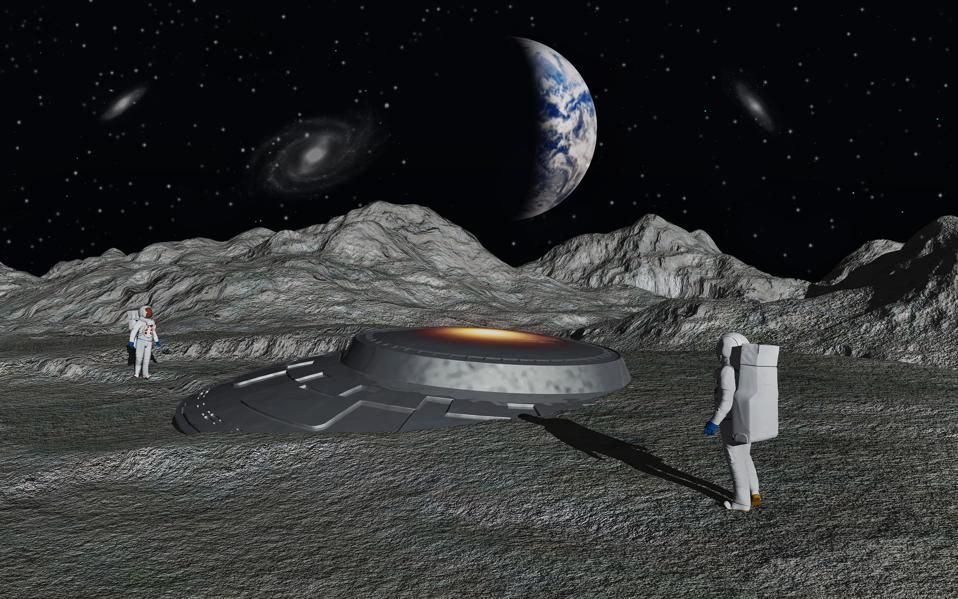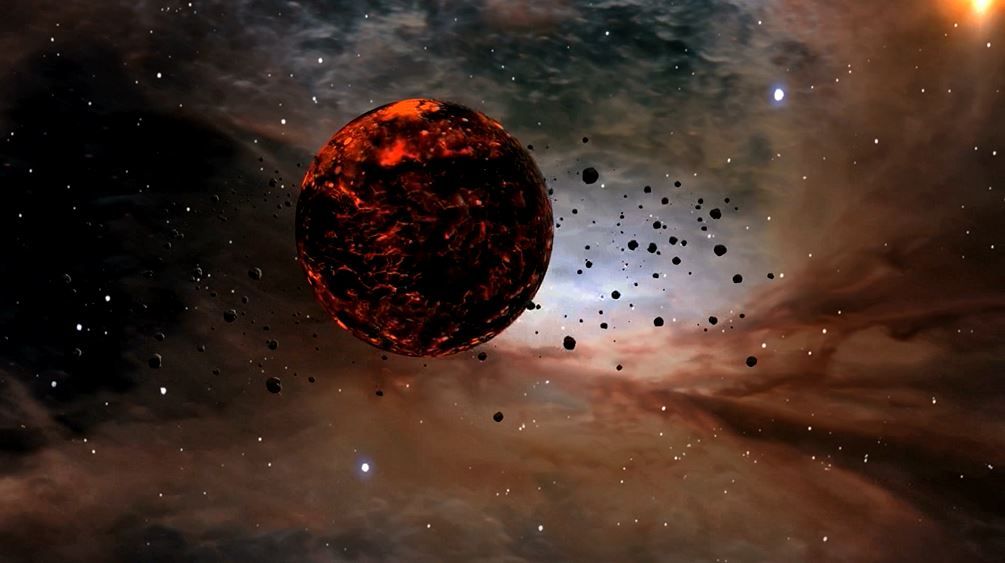Look for Ancient Alien Spacecraft on the Moon, Mars and Mercury Say NASA Scientists
Article by Jamie Carter March 22, 2021 (forbes.com)
• In 1993, pressure by budget-conscious politicians stopped NASA funding of programs searching for extraterrestrial life in the solar system. But in recent decades, NASA has been working more and more with organizations such as SETI – the Search for Extraterrestrial Intelligence. But a recent NASA-funded study paper published in the journal Acta Astronautica suggests that as NASA goes about its business in space, perhaps it should also keep an eye out for ‘technosignatures’ – or evidence of technology or industrial activity – without much additional spending.
• The study paper suggests that a permanent radio telescope could be set up on the far side of the Moon to search for alien signals. Interstellar probes from extraterrestrial civilizations might have been sent into our solar system long ago, and there may be artifacts or aliens “lurking” on asteroids or UFO crash sites on other planets giving off a laser or radio signal. “Such artifacts might have been captured by solar system bodies into stable orbits or they might even have crashed on planets, asteroids or moons,” reads the paper. “Bodies with old surfaces such as those of the Moon or Mars might still exhibit evidence for such collisions.”
• About every 100,000 years, the closest star ‘Proxima Centauri’ comes within nearly a light-year from the Sun – one quarter its usual distance. So there have been literally “tens of thousands” of opportunities for a technologically advanced civilization from that system to launch probes into our solar system, according to the paper.
• The study includes a list of nine ways that NASA missions could detect observational “proof of extraterrestrial life” beyond Earth in our solar system and beyond:
1. Conduct ultra-high resolution scans of the surfaces of the Moon, Mars, Mercury and Ceres for signs of impact or artifacts in crash sites that could be millions and billions of years old.
2. Look for CFC gases or nitrogen dioxide – pollutions typically associated with industrial activity or a byproduct of combustion or nuclear technology around distant exoplanets.
3. Conduct an all-sky survey using an infrared space telescope to search for “waste heat emission” from technological waste or Dyson spheres.
4. Put a permanent radio telescope dish on the “radio-quiet” far side of the Moon to conduct super-sensitive searches for distant technosignatures, free of human radio contamination.
5. Look for aliens and alien artifacts lurking on resources-rich asteroids orbiting the Sun with Earth.
6. Have an intercept mission ready to launch when a target like ‘Oumuamua’ next presents itself, tumbling through our solar system. The Vera C. Rubin Observatory’s all-sky surveys that is scheduled to begin later this year may very well find such a rogue object heading towards our star system.
7. Search existing NASA and academic data for objects in orbit around known exoplanets, atmospheric pollution and night-time illumination on exoplanets.
8. Conduct all-sky infrared laser pulse searches for in visible light and in wide regions.
9. Identify small asteroids under 10m in diameter that we may have previously overlooked, that may be artificial.
• [Editor’s Note] If deep state fronts such as NASA and SETI truly did any of these obvious things that their study paper suggests, they would find that we inhabit a solar system and star sector of this galaxy that is absolutely teaming with technologically advanced extraterrestrial activity. Of course, the deep state knows this. This is why they make a big deal out of publishing their “latest efforts” in their never-ending search for signs of extraterrestrial life. It is all for show.
 From UFO crash sites on other planets and aliens “lurking” on asteroids to a
From UFO crash sites on other planets and aliens “lurking” on asteroids to a permanent radio telescope on the far side of the Moon, a new NASA-funded study into the search for intelligent extraterrestrial life (SETI) details how future NASA missions could purposefully look for the “technosignatures” of advanced alien civilizations.
permanent radio telescope on the far side of the Moon, a new NASA-funded study into the search for intelligent extraterrestrial life (SETI) details how future NASA missions could purposefully look for the “technosignatures” of advanced alien civilizations.
Described as evidence for the use of technology or industrial activity in other parts of the Universe, the search for technosignatures has barely begun, but could unearth something surprising without much additional spend, says the study.
After more or less ceasing its search for technosignatures in 1993 after pressure by politicians, NASA has become increasingly involved in SETI.

Published in the specialized journal Acta Astronautica, the study includes a list of what’s NASA missions could detect as observational “proof of extraterrestrial life” beyond Earth.
Perhaps most intriguingly, the paper suggests that interstellar probes might have been sent into the Solar System a long time ago, perhaps during the last close encounter of our Sun with other stars.
The closest star to the Sun right now, Proxima Centauri, is over 4.2 light-years distant, but roughly every 100,000 years a star comes within nearly a light-year from the Sun. There have therefore been “tens of thousands” of opportunities for technologies similar to ours to have launched probes into our Solar System, according to the paper.
FAIR USE NOTICE: This page contains copyrighted material the use of which has not been specifically authorized by the copyright owner. ExoNews.org distributes this material for the purpose of news reporting, educational research, comment and criticism, constituting Fair Use under 17 U.S.C § 107. Please contact the Editor at ExoNews with any copyright issue.




 A new NASA research suggests that we might detect advanced extraterrestrial civilization using its atmospheric pollution. This study is the first time NO2 has been examined as a possible technosignature.
A new NASA research suggests that we might detect advanced extraterrestrial civilization using its atmospheric pollution. This study is the first time NO2 has been examined as a possible technosignature.